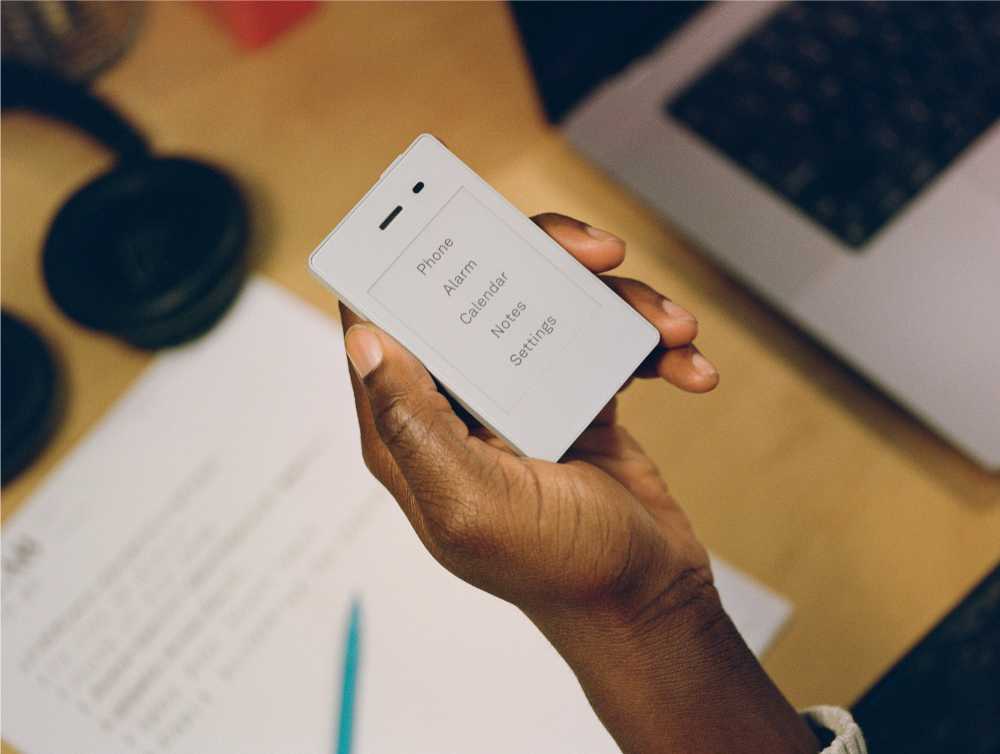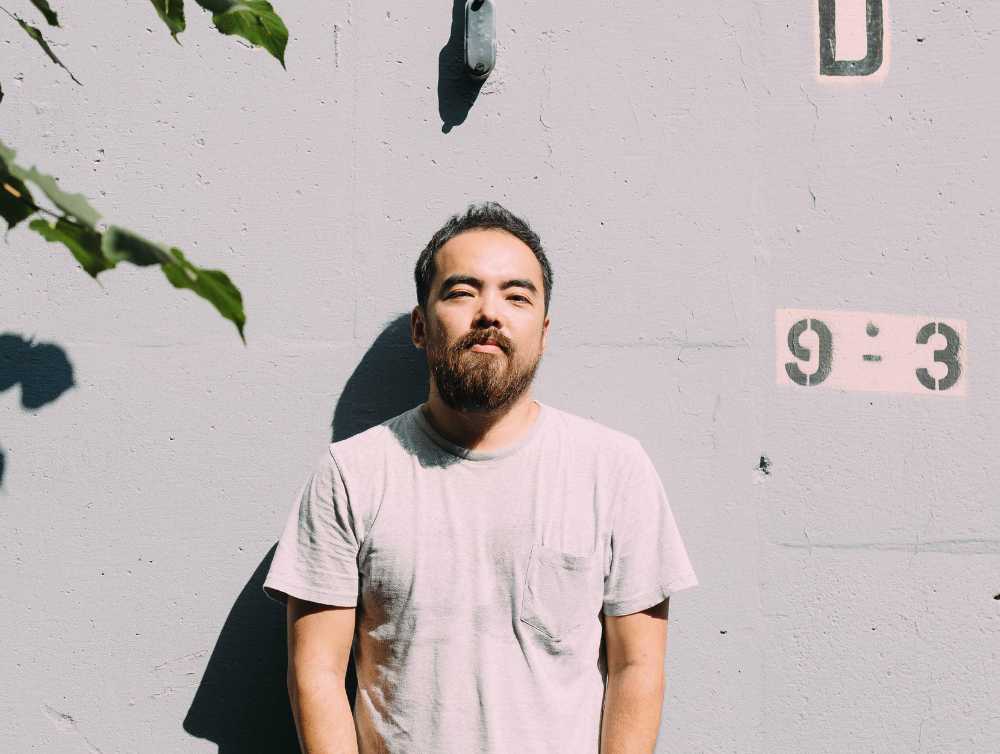This post was last updated on December 5th, 2023 at 05:56 pm
Back in 2015, as sales of the new iPhone 6 boomed and Apple CEO Tim Cook declared his company had sold 74 million phones in just three months, Joe Hollier and Kaiwei Tang decided that many people were ready for the exact opposite of Apple. To test their idea, they launched a Kickstarter campaign to raise money to make a phone without a colorful screen, without an internet browser, and—most important—without social media. The result in 2017 was the Light Phone, a device that might appear “dumb” but its ardent fans today consider “brilliant.”
About the size of a credit card, the phone functions as an alternative for people who want to keep the most helpful features of their smartphone while eliminating the most distracting ones. With it, you don’t have to worry about your data being collected because there’s no way for companies to access it. The Light Phone features its own unique operating system and several helpful tools requested by its users.
With the release of the Light Phone II in 2019, the device now includes an alarm, calculator, music player, podcast tool, a notes tool, calendar, and directions. You can, of course, make calls and send messages, along with group messages.
When I recently interviewed Kaiwei, he referred to the Light Phone as a “minimalist smartphone.” “We don’t have to take everything the smartphone offers. We have a choice to say, ‘Hey, I just want to listen to podcasts, or take a note, or get directions home, or text someone. I don’t want anyone to know where I am or collect my data. I just want to use this tool, put it back, and move on,'” he said.
Kaiwei believes demand for minimalist devices will continue to grow as more people opt out of what Kaiwei describes as the “attention economy.” This intensifying competition to capture and keep people’s attention is generating billions of dollars in profits for tech companies at the expense of people’s health.
“The problem of smartphone addiction, social media, and the attention economy is not going to stop. It’s going to get worse from here,” Kaiwei said. “The bigger this attention economy grows, the bigger this anti-social media movement will grow. We are just at the tipping point of this movement, in my opinion.”
Read more excerpts from my interview with Light Phone co-creator Kaiwei Tang below. Some responses have been edited for length and clarity.
Frugalmatic: I personally went from feeling a little embarrassed for having a dumb phone, or a minimalist phone, to now feeling almost proud of it. I wonder what is the psychology among those who aren’t using smartphones. How has it evolved over time?
Kaiwei Tang: I think a lot of people are feeling the same way as you do, especially among Gen Z or teenagers. They feel proud of being different. Also, some celebrity influencers talk about the mental health problems that come from social media. A lot of them have given up the smartphone and returned to a simplified feature phone, or the Light Phone. I think there’s a trend among the general public that this is a viable option. This is a lifestyle that is a healthy choice that we can make.
Joe and I started the company in 2015, and the last seven or eight years we’ve witnessed this movement growing every year. More and more people feel the need to get away from smartphones and social media. They agree with our mission to design technology tools as tools for human beings, not the other way around, meaning that smartphones now are just a portal to social media, a portal to advertisement or data collection.
F: One of my frustrations in owning a minimalist phone is the emergence of what I call ‘digital gates.’ They’re popping up in more and more places. I’m talking about when you want a certain service or want to attend an event, you now often need a smartphone app to access it. I’m wondering how this trend is affecting your company.
KT: I experience this as well. I only use a Light Phone. Like in a restaurant, I always have to ask for a paper menu. When we started Light Phone, the mission was not to replace smartphones. The mission is to create another tool that’s designed without all the distractions, similar to how we design different cars. A big SUV that can carry a lot of stuff versus a mini-car for city driving. The Light Phone is just a different tool for a different purpose. We still have our laptop, we still have our iPad for everything else. But I don’t have a smartphone. When I know I need access to features that Light Phone doesn’t offer, I will bring my iPad. It’s a different tool.
This trend of the digital gates, I think it’s real. But 9 out of 10 times I can manage, meaning I’ll print out a ticket. I’ll bring a paper printout with me if I know we need that barcode. We also at Light Phone are trying to create a tool to help our users navigate this problem. Down the road, we want to be able to display and scan barcodes on the Light Phone, as a barcode tool. Hopefully, as we grow, we’ll have more utility tools to address those problems.
Read: Here’s what a Zero G phone looks like
F: I wonder even among avid smartphone users, don’t they get sick of digital gates and having to download all these different apps for every little thing?
KT: For sure. I’ve witnessed my friends who use smartphones have the same reaction: ‘Why do I have to use my smartphone to order something? Why can’t I just talk to someone?’ We as humans crave interaction. Some of those interactions can be replaced by digital interactions but a lot of them cannot. That’s one of the reasons I started the company. I don’t think face-to-face interactions will go away just because we have more options to order food or buy tickets. That’s my hope, anyway.


F: One of the things I’ve noticed is that kids who have smartphones keep getting younger and younger. I’m seeing smartphones creep into the elementary grades, fourth, third, down to second even. How do parents navigate this environment? And, do you have many parents asking about getting a Light Phone for their kids?
KT: This is a surprising customer segment that we have. I didn’t design the Light Phone for kids. That wasn’t the purpose. I designed the Light Phone for myself, for people like me. But in the last few years, we’ve had more parents reach out to buy a Light Phone for their kids, which makes sense.
We also partnered with a school in Boston to replace every kid’s smartphone with a Light Phone when they’re on campus. It’s such a fascinating experiment with the school. The first day when they implemented it, meaning to take away their smartphones and give them Light Phones on campus, the head of the school told us he was mind blown by the change that’s been happening on campus. He was telling me that the kids are running around. There’s no drama from social media. They’re playing games, making new friends, talking to each other, making eye contact. The teacher doesn’t have to tell the kids to put the smartphone down. I’m really happy for that change, and I’m also like, ‘It’s a no brainer.’
The smartphone is designed by a billion-dollar company who hired the best engineer, designer, and psychologist to create a product that maximizes engagement, which leads to profit for the company. The product is addictive because that’s how they make money. There’s no way out. If you give this addictive product to your kids, there’s no way they will not be addicted.
Read: How to raise a smartphone-free child
F: You mentioned you were researching a possible tool that would allow Light Phone users to read or display barcodes. What kind of new tools might be on the horizon for the Light Phone?
KT: All tools that we’ve wanted to make, they’re all utility tools. No entertainment, no social media. There’s no data collection with any of our tools. We wanted to do a find-my-phone tool for parents, especially, when they give their phone to their kids. We wanted to do a bar code reader and display, so I don’t have to bring my paper with me to get into a facility or venue. We also wanted to do a payment tool, so you can make payments. Rideshare is another big one we’ve been trying to develop, but that would require third-party collaboration with Uber, Lyft, or anyone else. There’s a list of utility tools we wanted to do, but we’re just constrained by our resources. We are still a small company in Brooklyn, and we prioritize what we need to do.
Sometimes our users will surprise us with the demand like, for example, the emoji keyboard that we just introduced. Before this year, I never thought about creating an emoji keyboard. It wasn’t on our priority list. But we did a survey with our users, and the emoji keyboard was in the top three requested. So we ended up prioritizing that.

